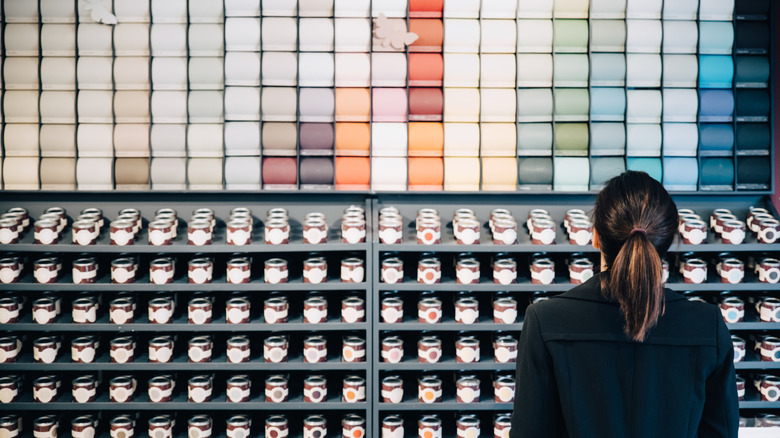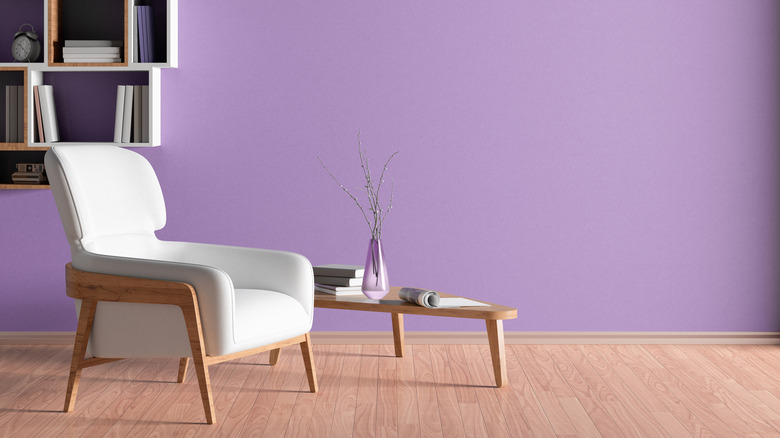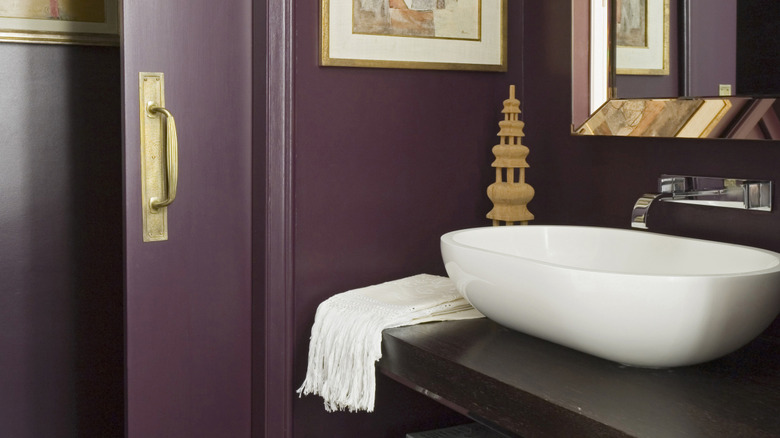The Risky Paint Color Trend That's Coming Back In Style And Taking Center Stage
Taking risks with your aesthetic is not only being embraced, but encouraged when it comes to interior design. For years, certain trends were considered dated or out of style, one of which was purple paint on your interior walls. While covering your entire home in what could only be a considered a Willy Wonka theme is definitely not en vogue, it seems that the purple color palette is making a little comeback. Purple is often attached to thoughts of royalty and luxury, but it also has the power to make people feel serene, calm, and relaxed. The darker hues are also connected to emotions of power, and can invoke creativity. Some rich purple hues are even being treated like a neutral shade despite not falling under the traditional list of neutral paint options. The daring color trend of using purple in your home is here to stay and bring an unexpected touch to our interiors.
Choosing the right space to paint purple comes down to more than just the ambience it brings. Using this color should be intentional, to create either drama or serenity within a room, and it doesn't need to be a complete color drench either. While painting an entire space purple certainly adds drama, it doesn't have to take over the entire room or be the main focal point. You can also opt for an accent wall instead, bringing just enough of the purple shade in that it creates a subtle (or loud, depending on the shade) color pop without feeling like too much, especially if you don't use a lot of color in other areas of the house.
Use various shades to create emotion and connection in your rooms
If decorating a home office or a communal area, opting for a dark purple can be inviting and help to create a place where people can feel inspired. Deep purple hues in particular can bring a dramatic flair to a room, introducing a moody vibe without feeling too heavy. If you really want to make a statement, choose a deep purple like Plum Royale or Caponata, both by Benjamin Moore, and cover all the walls. Accent the shade with pops of gold, natural wood tones, or even stone to bring a grounding element into the space. Ina Garten's favorite purple paint shade is a great option for a dramatic bathroom, but you can use any shade for smaller areas like this to bring through this trend.
Painting your bedroom purple may be a mistake, as some shades can make people restless or even lose sleep. These are usually the deeper, darker hues, but you can introduce softer, lighter shades like Myland's Lavender Garden. This shade is a much more calming take on the trend thanks to its gray undertones that bring a neutrality to the room, allowing for any number of aesthetics and decor themes.
Play with undertones and accents for dimension
Undertones can make a big impact on your paint and the room where you add it, so keep those in mind while finding the color you like. If you opt for a red or brown tint to your purple, this will warm up your walls. Naturally, these tones work well with walnut or cherry woods and anything that leans into the warmer side of the spectrum. You can also create a palette where you play around with gold accents, creamy neutrals, or certain greens that make the purple pop.
If you prefer a purple with a blue undertone, this will bring a cooler element to the space. Cool shades typically provide a more calming ambience and can pair well with black and silver accents, so these purples are perfect if you're looking to create a breezy space without relying on the same old boring gray. It might seem daunting to use purple in your home, but any shade can be countered, enhanced, or balanced to make it stylish rather than dated.


